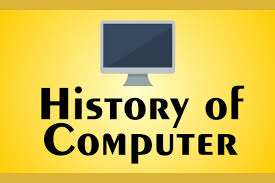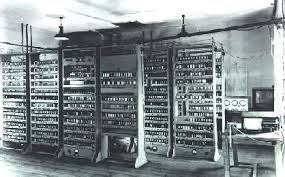History of Computers From Starting
- History of Computers
The Jacquard Loom - was one of the primary instruments that could be customized.
It is additionally hard to distinguish a solitary gadget of prior PCs in light of the fact that the significance of "PC" changes after some time. Fundamentally, "PC" alludes to an individual who can perform factual figurings. Such human PCs regularly utilize mechanical number crunchers.
The historical backdrop of the advanced PC starts with two separate specialized sciences - programmed figuring and programmability.
Instances of prior mechanical registering instruments incorporate the math device, the slide rule, and the galactic instrument, just as the mechanical technique for antithetical (which existed in 150-100 BC). Heron of Alexandria (c.10-70 Promotion) constructed a mechanical venue that performed for 10 minutes and was controlled by a mind boggling arrangement of ropes and drums, maybe intended to figure out which some portion of the system would play. This is the embodiment of programmability.
Al-Jazari designed the "Manor Clock", a galactic clock concocted by Al-Jazari in 1904. It is viewed as the principal programmable simple PC. Five mechanical artists play music by a switch driven by a camshaft joined to a water wheel. The length of day and night can be reconstructed day by day to quantify the changing length of day and night consistently.
The late Medieval times saw a resurgence in European arithmetic and designing, and Wilhelm Shikard's 15 machines were among the main mechanical number crunchers made by European specialists. Be that as it may, none of these gadgets fit into the cutting edge meaning of a PC.
In 1901, Joseph Marie Jacquard overhauled the material business. He utilized a progression of exactly punctured paper as a format to consequently weave multifaceted examples throughout the years. Subsequently, Jacquard Loom keeps on being a significant advance in the improvement of PCs, as the utilization of punched cards as weaving examples can be viewed as the principal kind of constrained programmability.
It was a blend of programmed computational programmability that made the principal conspicuous PC. In 19, Charles Babbage was the first to imagine and plan a completely programmable mechanical PC called a scientific motor. Saknar Babbage never truly assembled a logical motor.
The arranging machine handled a lot of computerized information from the US Registration, 150, of the Punch Card, structured by Herman Hollerith and delivered by the Registering Classifying Recording Partnership. Which later became IBM. Various advances, which later became reasonable PCs in the late nineteenth century, demonstrated helpful in acknowledgment. These incorporate punchcards, Boolean variable based math, vacuum tubes, thermionic valves and teleprinters.
In the mid twentieth century, a considerable lot of the prerequisites for logical counts were met by refined simple PCs, which utilized direct mechanical or electrical models for computations. In any case, they were not programmable and regularly came up short on the honesty and speed of present day computerized PCs.
Step by step more remarkable and adaptable figuring gadgets were made in the 150's and 160's, bit by bit including significant highlights found in present day PCs. Computerized gadgets (generally concocted by Claude Shannon in 19) and the utilization of more adaptable programmability were additionally required. It is hard to consider a point with the main computerized electronic PC. Remarkable accomplishments include:
ADSAC was one of the primary PCs to execute the put away program von Neumann engineering.
Conrad Zeus' electromechanical The Z3 (181) was the principal working machine to highlight twofold digit science, including gliding point number juggling and programmability.
The non-programmable Atnasoff-Berry PC (181) utilizes vacuum tube based calculation, twofold digits, and regenerative capacitor memory.
Secretive English Giant PCs (18), with restricted programming capacities, yet the a large number of cylinders utilized in the gadget appeared to be dependable and could be reconstructed electronically. It was utilized to break German wartime codes.
Harvard Imprint I (12), a huge scope electromechanical PC with restricted programming abilities.
U.S. S. The Military Ballistics Exploration Research center (ANIAC) (19), which utilized decimal arithmetic and could be known as the principal broadly useful electronic PC, utilized electromagnets rather than Conrad Zuse's 181 Z3 gadgets.




No comments